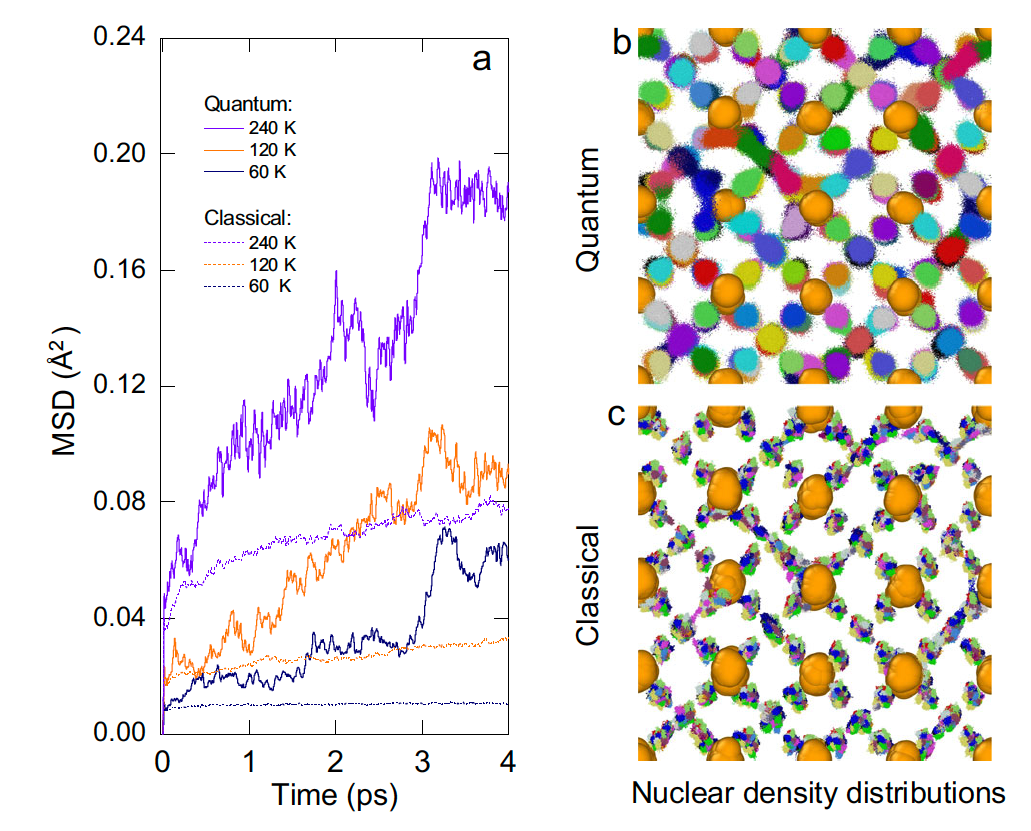
Submitted by Chuck Witt on Fri, 14/04/2023 - 10:06
Figure caption: Quantum effects are essential for hydrogen to dynamically explore different configurations. On the left, we see how the hydrogen atoms cover much larger distances at all temperatures when quantum effects are taken into account. On the right, we see that this reflects itself in a much larger spread of hydrogen positions compared to simulations without quantum effects.
Lanthanum polyhydride under pressures approaching those in the Earth’s core was the first experimentally confirmed superconductor exhibiting this remarkable phenomenon at temperatures surpassing 250 Kelvin [1]. Yet despite the interest from both experimentalists and theorists this material has attracted, certain features of its behaviour have until now remained unexplained. One notable example is the initial increase of the superconducting critical temperature as higher pressures are applied.
An international team of scientists, including Pascal Salzbrenner and Prof Chris Pickard from the Department of Materials Science and Metallurgy at the University of Cambridge, have now demonstrated that the key to understanding this feature is the presence of defects in the hydrogen sublattice of lanthanum polyhydride. Hydrogen, as the lightest element, exhibits strong quantum effects. These allow the hydrogen atoms to hop between different defect sites. The resulting lattice distortion causes the increase of the critical temperature with increasing pressure.
Wang, H., Salzbrenner, P.T., Errea, I. et al. Quantum structural fluxion in superconducting lanthanum polyhydride. Nat Commun 14, 1674 (2023). https://doi.org/10.1038/s41467-023-37295-1
[1] Drozdov, A.P., Kong, P.P., Minkov, V.S. et al. Superconductivity at 250 K in lanthanum hydride under high pressures. Nature 569, 528–531 (2019). https://doi.org/10.1038/s41586-019-1201-8

